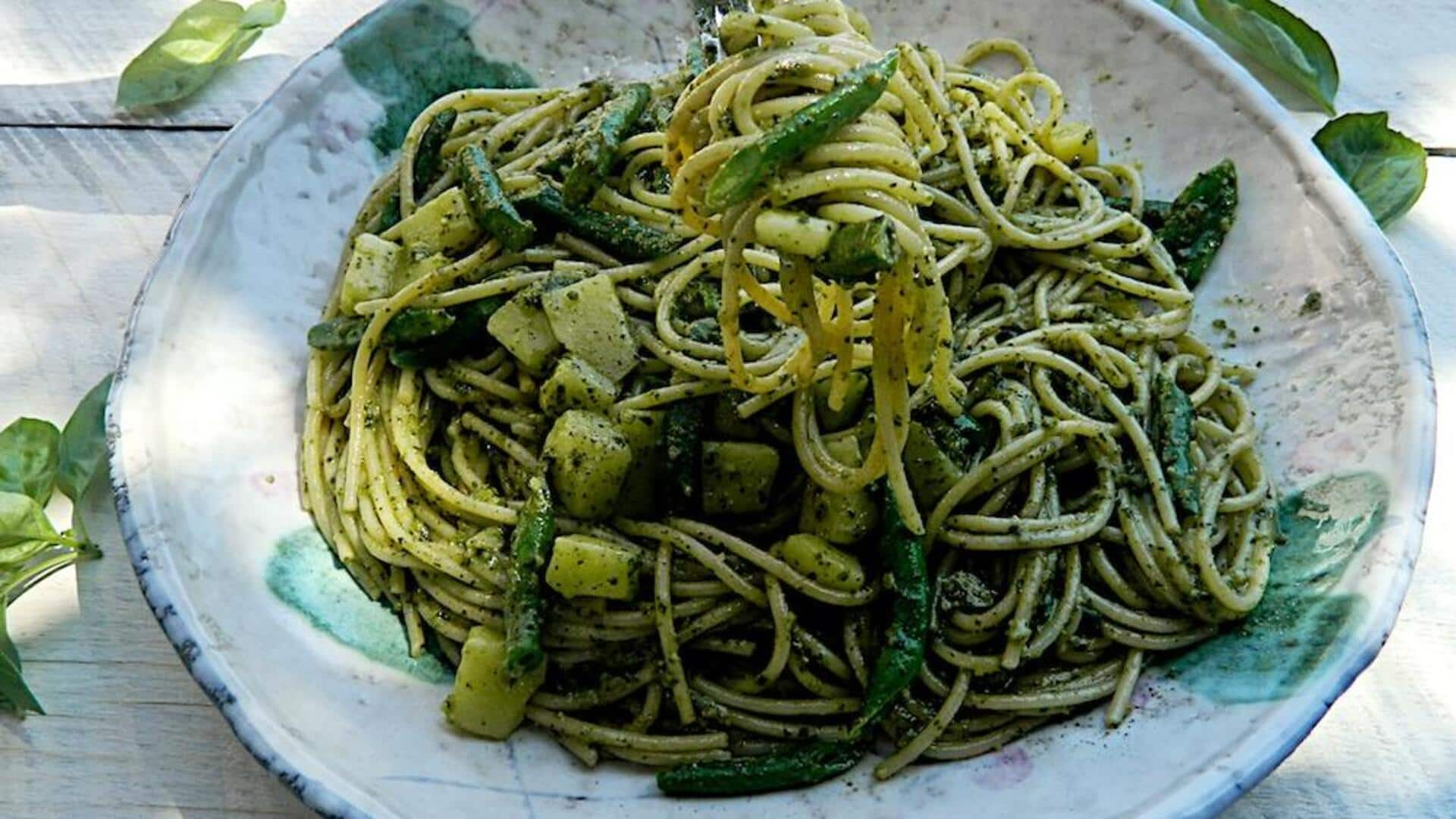
Essential herbs for authentic Italian pesto
What's the story
Italian cuisine is renowned for its robust flavors and simplicity, and pesto stands out as one of Italy's most iconic sauces. Hailing from the city of Genoa in the Liguria region of Italy, classic pesto, or pesto alla genovese, is a vibrant green sauce that's both versatile and easy to prepare. This article delves into the best herbs crucial for creating that authentic Italian pesto experience at home.
Basil
The quintessential basil
No true Italian pesto is complete without a generous handful of fresh basil leaves. Basil is the green backbone of the sauce, lending a sweet yet slightly peppery flavor that is both refreshing and distinctive. For an authentic pesto, you should use approximately two cups of fresh basil leaves. This aromatic herb not only gives the sauce its vibrant color but also imparts its unique fragrance and taste.
Parsley
A touch of parsley
Although not a traditional ingredient in every recipe, parsley can be incorporated into pesto to enhance flavor and amplify the vibrant green color of the sauce. If utilized, opt for fresh parsley over dried and use it sparingly to avoid overshadowing the basil. A small handful or roughly one-fourth cup is adequate for most recipes. Parsley imparts a subtle bitterness that contrasts nicely with the sweetness of basil.
Garlic
The role of garlic
Garlic is a key player in traditional Italian pesto, providing a strong, aromatic backbone to the sauce's overall flavor profile. Usually, just one or two cloves pack enough punch to make their presence known without overpowering the other ingredients. And go for fresh garlic! It melts right into the mix, giving you a bigger flavor bang for your buck than the pre-minced stuff.
Pine nuts
Incorporating pine nuts
Pine nuts are essential in pesto for their contribution to both texture and flavor. These tiny seeds create a creamy emulsion when blended into the sauce, resulting in a rich consistency that clings to pasta just right. Plus, they lend a subtle nuttiness that balances the sharpness of the other ingredients. Most recipes suggest around two tablespoons for a standard batch of pesto, but you can always adjust to taste.
Olive oil
Olive oil: The binder
Extra virgin olive oil serves as the unifying element in Italian pesto, harmonizing all ingredients and contributing a velvety, luxurious quality. Its quality directly influences the final taste, making it essential to select a high-quality extra virgin olive oil for a truly authentic flavor experience. The quantity depends on the preferred consistency, but most recipes call for anywhere between half a cup and three-fourths of a cup.